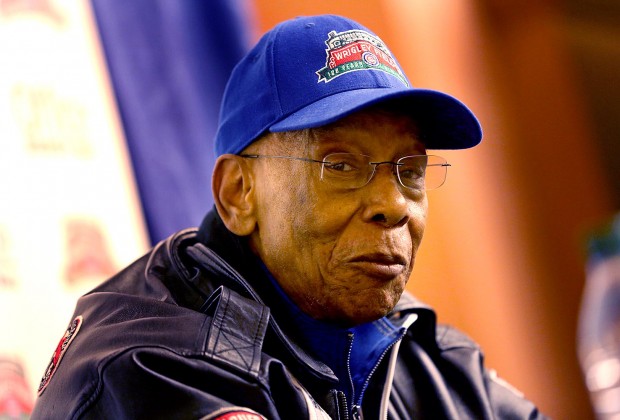When Ernie Banks took his first steps onto Wrigley Field in 1953, the Chicago Cubs were twenty-two games under five hundred. The ivy Bill Veeck planted more than thirty seasons before was bright green, and it matched the stadium’s marquee. There were no lights, no private rooftop boxes, and no retired jerseys flying from foul poles.
The day Banks made his unofficial debut, the Cubs were playing the Dodgers, who still resided in Brooklyn. One can almost imagine Jackie Robinson, who had broken the color league's color barrier just six years earlier, watching Banks stepping to the plate for batting practice and belting the first pitch he saw. It went “out of the park” according to the Tribune account, sailing over the bleachers. But batting practice was the only action Banks would see that afternoon.
The Philadelphia Phillies spoiled his official debut a few days later. The paper called his performance as “unimpressive,” a description that Cubs fans would rarely see or hear applied ever again to Banks, who earned the nickname Mr. Cub over the years.
His first Major League home run came a few days after the Phillies game, playing against the Cardinals. Over the next eighteen years, 511 more would follow, along with more than 1000 runs batted in. In 1977, he received the call to Cooperstown. Five years later, the Cubs retired his #14, and it flies from the left field foul pole. In 2013, Banks received the Presidential Medal of Freedom.
Banks died Friday at the age of 83, and Chicago is already paying its respects. His name is lit up on Wrigley's red marquee and a small memorial has sprung up near his statue. Trash-talking Cubs tweets have turned to eulogies and dusty caps are out in Opening Day level-force.
And it's no wonder: The legendary player is etched into hearts and minds of generations of baseball fans for both his skill and sunshiny attitude. Ernie Banks played a game he loved so much, that on the very best days, he got to play it twice.




